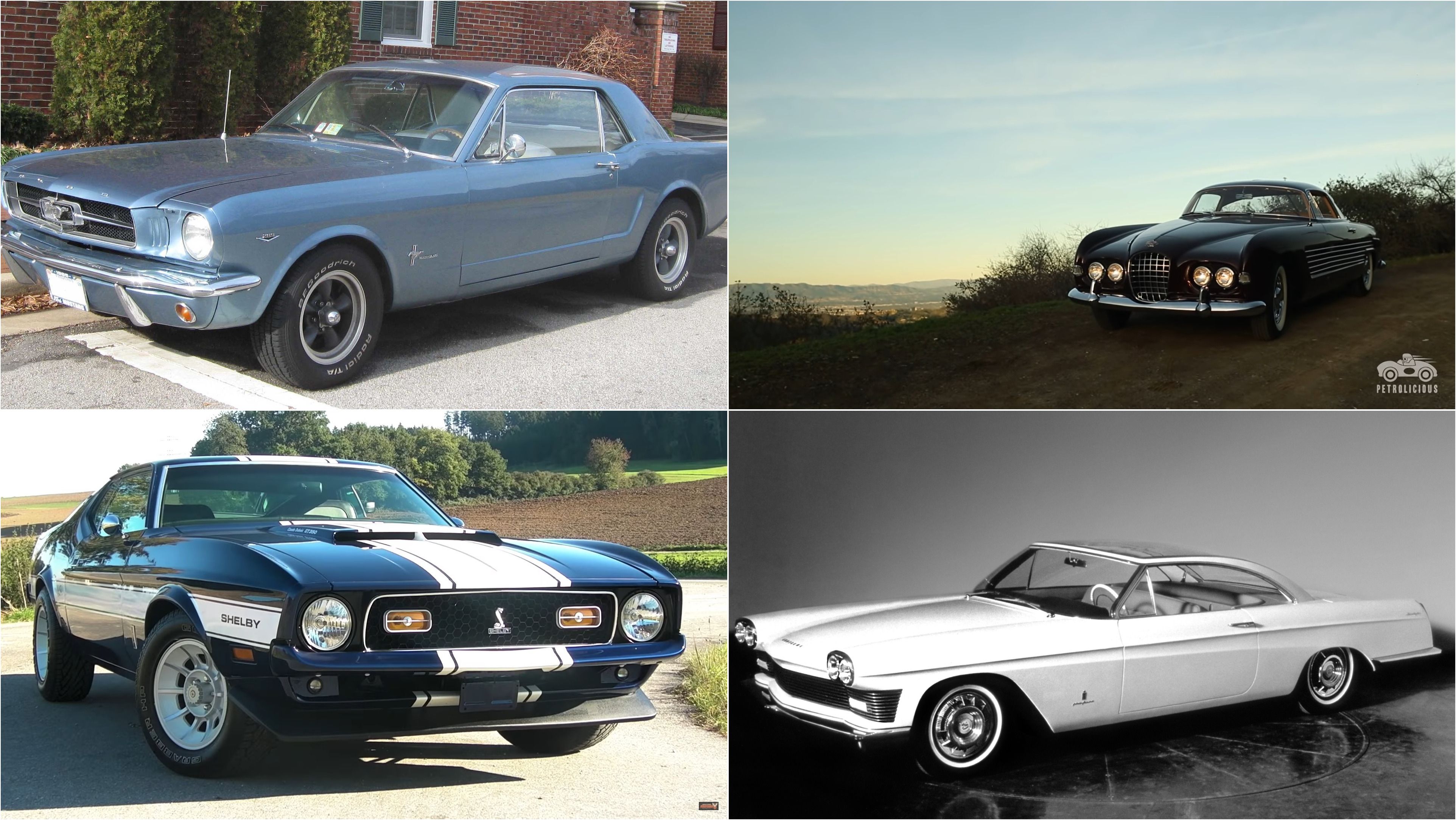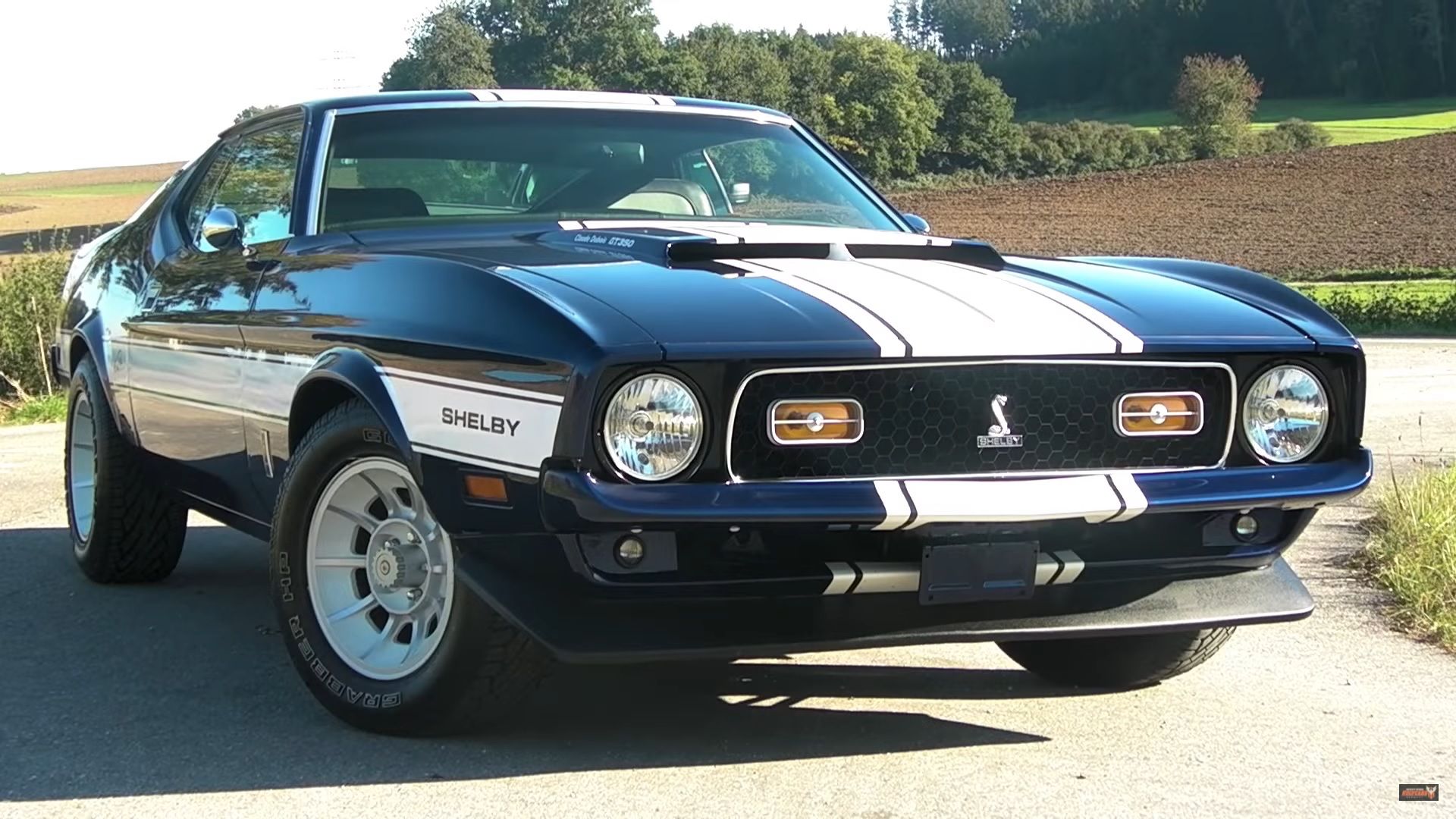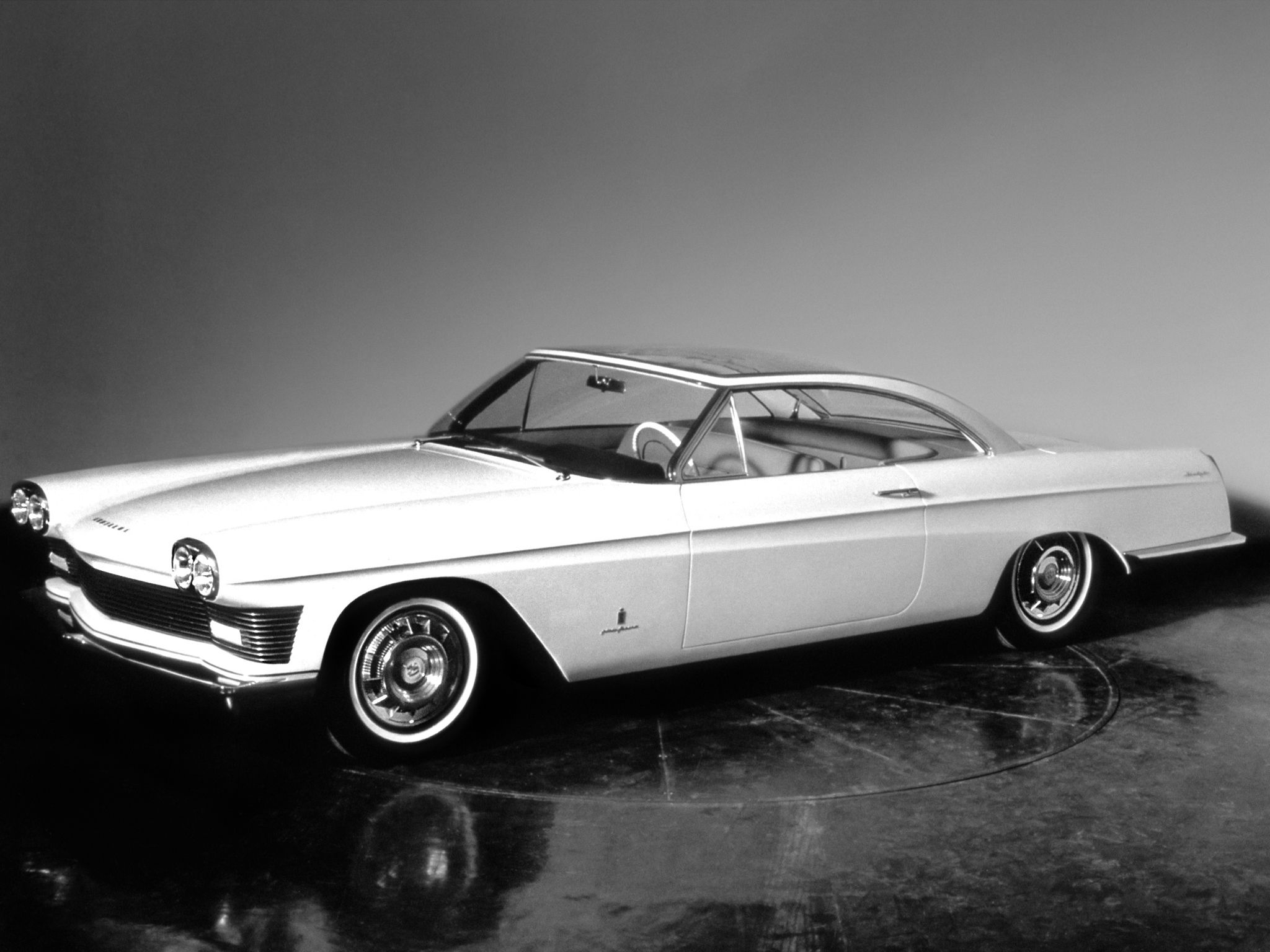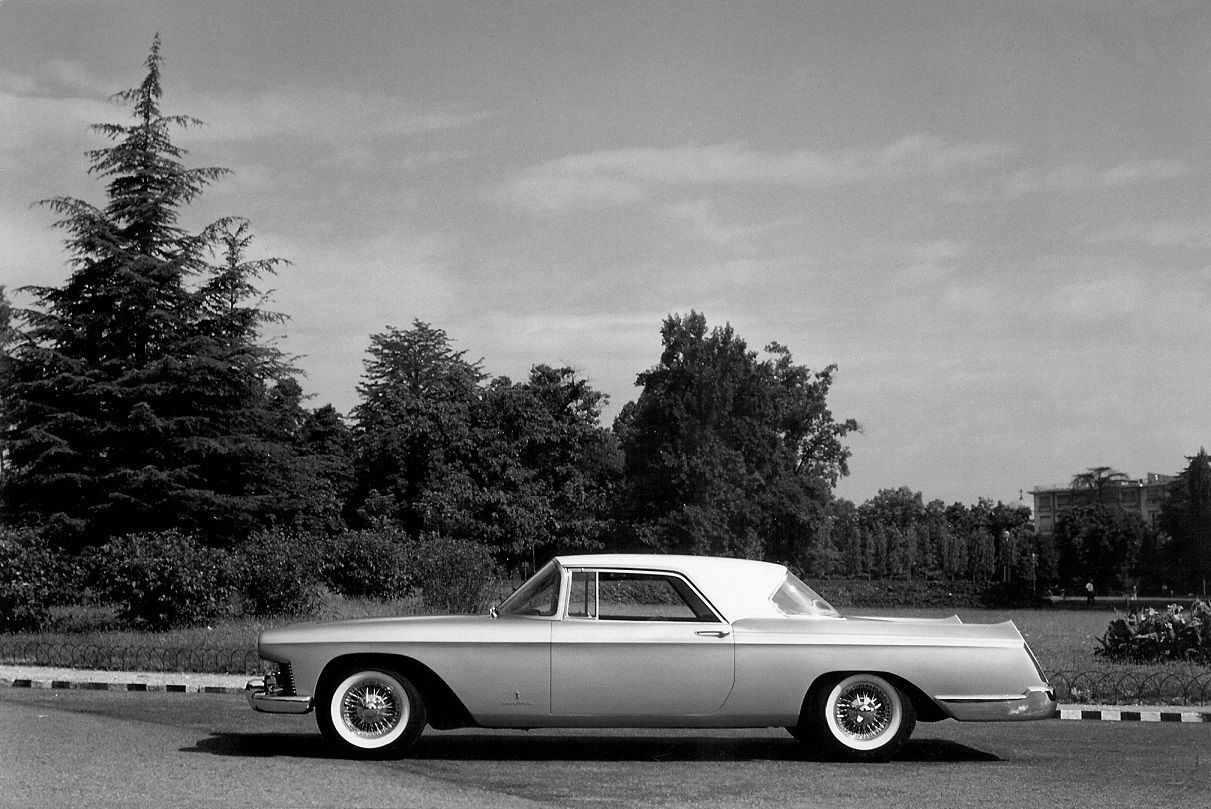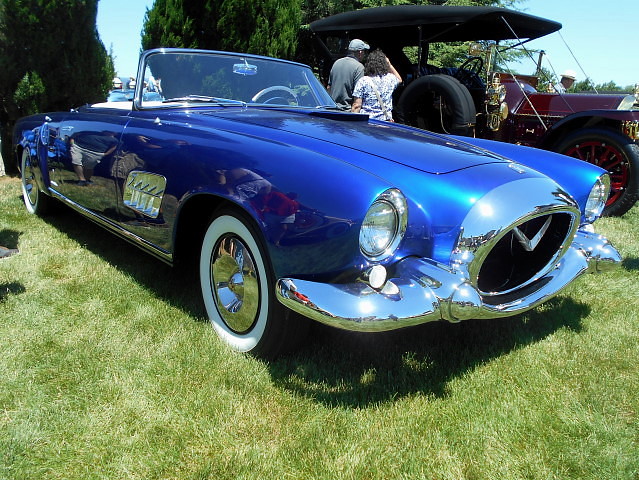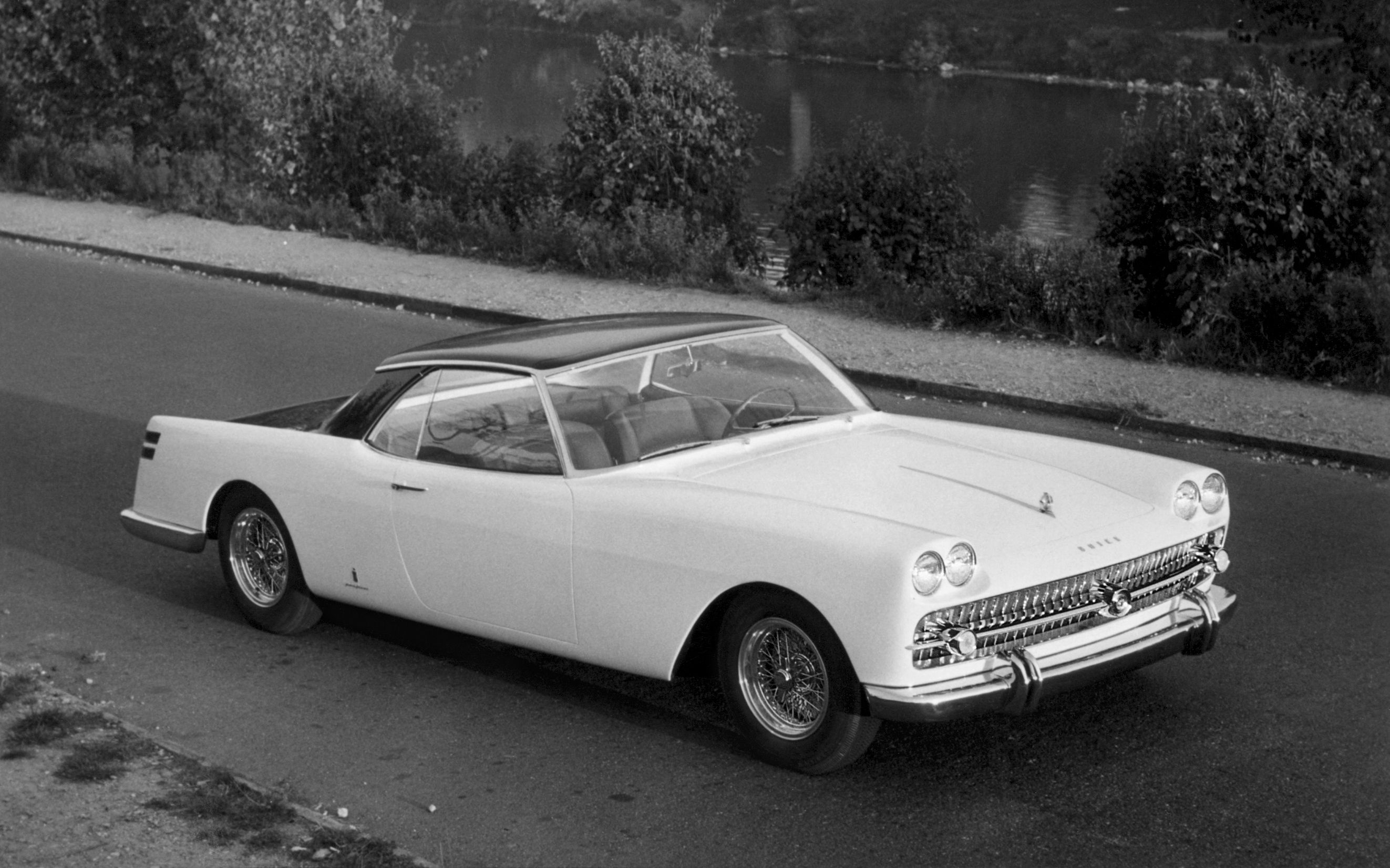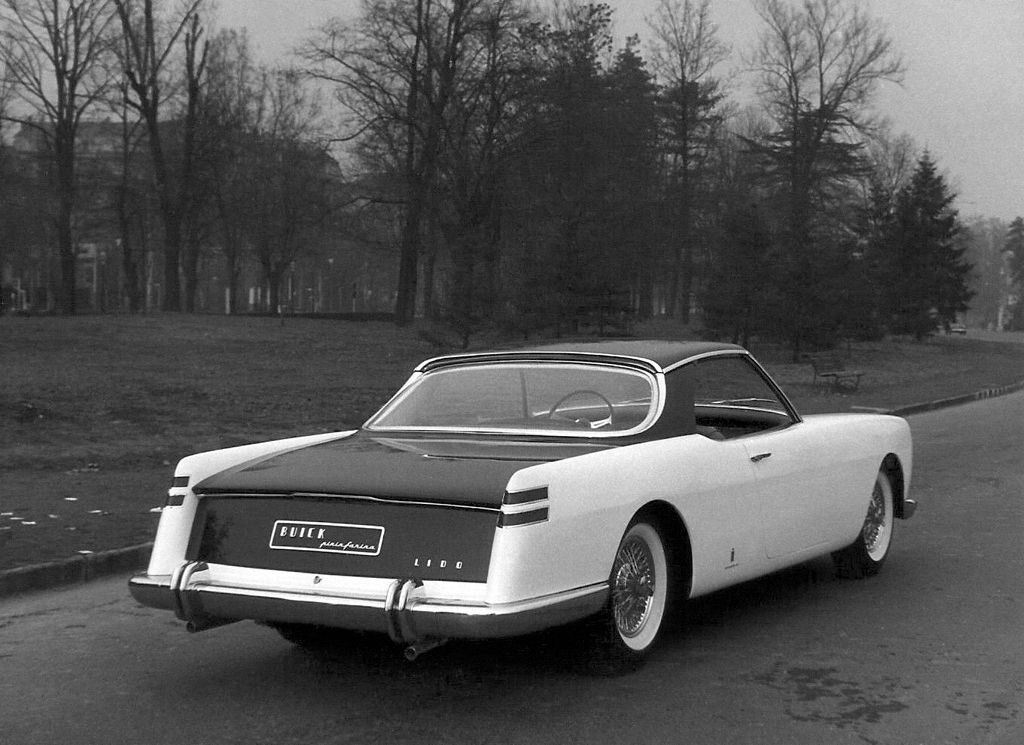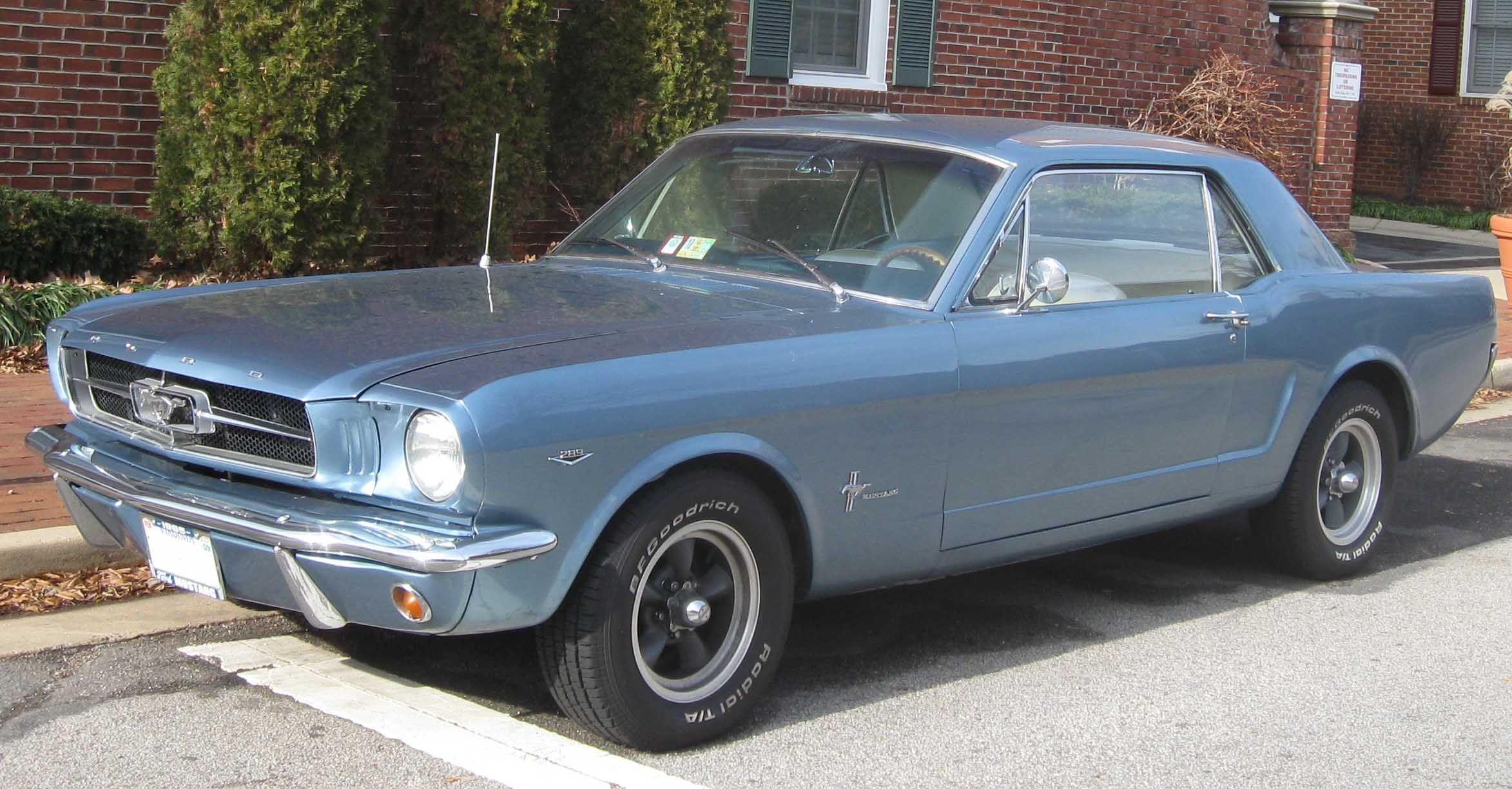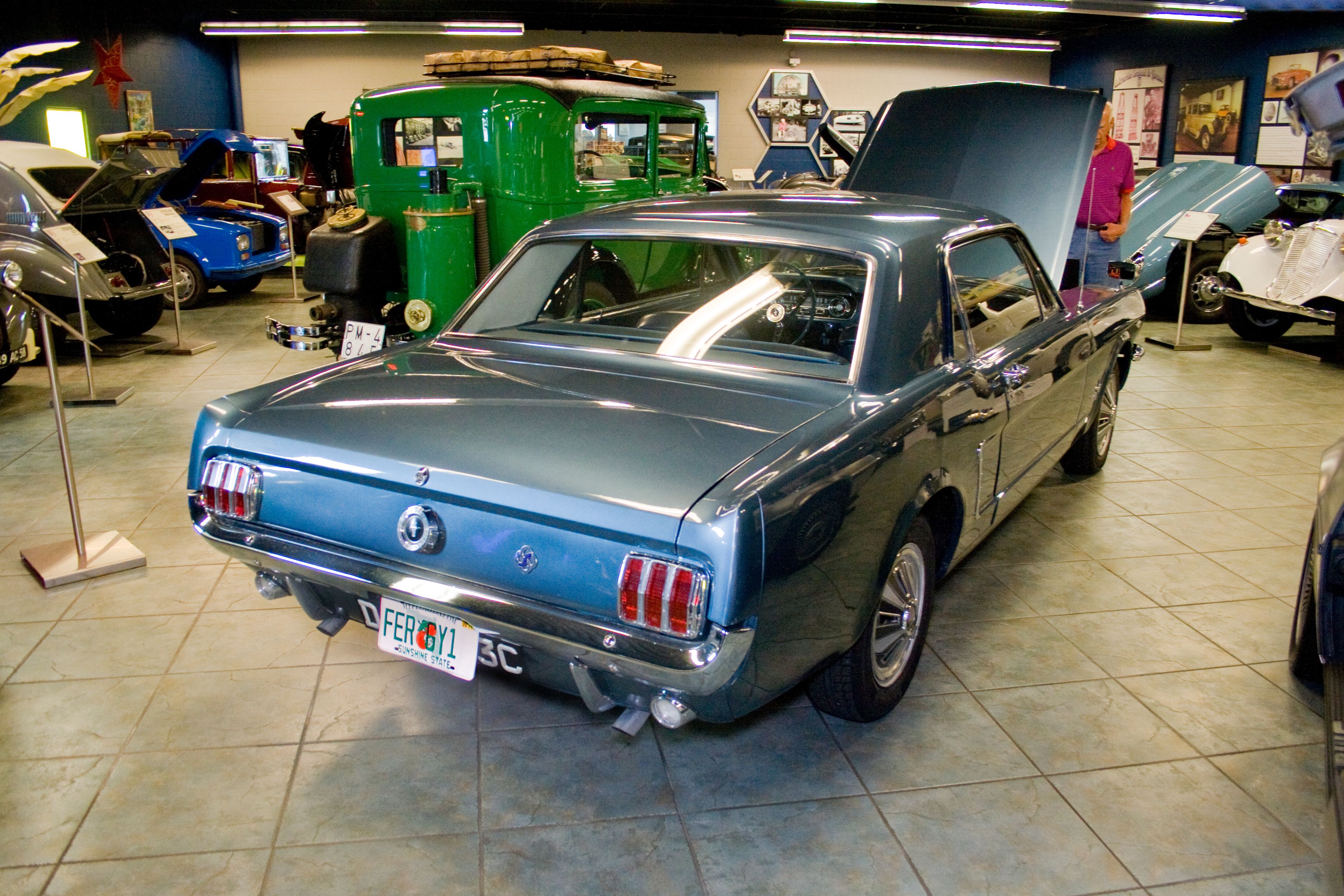When you think of iconic, classic American cars, Cadillac Coupe DeVille, Ford Mustang, Chevrolet Corvette, and Dodge Challenger are, often, some of the first to come to mind. And while each of them has had their fair share of special editions, we can't help but wonder what classic American cars can be like, with a European twist. Whether it's their design or an unusual engineering solution, these are the most obscure American classic cars ever to exist.
Ford Mustang Shelby Europa
When the Mustang came out back in 1964, it captivated not only the hearts of Americans but also those of Europeans. However, thanks to a Belgian ex-racing driver and Mustang dealer, Claude Dubois, Europe got its own exclusive version, called the Mustang Shelby Europa.
When the original Shelby production run ended in 1970, Dubois approached Carrol Shelby in order to license the cars for the European market. What Europe ended up with was a small series of nine cars (initially thought to be 14), dubbed the Shelby Europa. Two versions were available, both based on the 1971 Mustang – GT350 and GT500. The first one had the 351 CID Windsor, while the latter came with the 428 CID Cobra Jet. They were rated at 360 and 400 horsepower, respectively.
The Shelby Europa's price was one of the reasons, only nine cars were sold, as they effectively became six-figure cars by the time they got to the old continent. Nevertheless, the Shelby Europa has a cult following in Scandinavia, where most (if not all) of the nine cars are said to be located. Of the nine cars, two were convertibles, and seven were fastbacks. According to the latest reports, the convertibles are in Finland and owned by the same person.
Cadillac Series 62 Ghia
Cadillacs from the 1940s, 1950s, and 1960s are known, among other things, for their exquisite styling. And while it's challenging to find a Cadillac from those periods that were ugly, some were even more special. This 1953 Cadillac is a perfect example, as it features coachwork from Ghia. Only two of these exquisite vehicles were made, but one of them, in particular, has an interesting story behind it.
The car was actually a gift to actress Rita Heyworth from Ali Khan – a Pakistani diplomat and son of Sultan Muhammad Shah. The car was a two-seater and featured a unique canopy design, with a split rear window that continued as far as the B-pillar. At some point in time, the car found itself in Los Angeles, California. It is unknown what the original exterior color of the car was, but early on, it was painted in white, which didn't compliment the design. Some images suggest that the original color was bright blue with white accents, but no one can confirm that.
Eventually, the founder of the Peterson Automotive Museum bought the car from a German collector. A full restoration followed, in which the Cadillac was painted in what looks to be Bordeaux. The underpinnings are of a Series 62 Cadillac, and propulsion came from a 331 cubic inch (5.4-liter) OHV V-8 engine, rated at 210 horsepower.
The highly-finished, tan-leather interior was minimalistic and elegant and featured a large storage area behind the seats. Since the Peterson Automotive Museum acquired the car, it has attended numerous events and won many Concourse d'Elegance awards. To this day, the car is still at the Museum.
Read our full review on the Cadillac Series 62 Ghia
Dodge Firearrow Ghia
After World War II, many Americans were fascinated by European culture. When it comes to aesthetics, the Italians, in particular, have the most impact. Because of this, many American carmakers approached the legendary Italian coachbuilders. This resulted in cars like the Dodge Firearrow, of which Ghia produced not one but four different versions, dubbed the Firearrow I, II, III, and IV.
The Firearrow was originally penned by the automotive designer Virgil Exner before the cars were handcrafted by Ghia. Of the four cars, only the Firearrow III was a hardtop. The cars were very similar, but at the same time, featured a lot of distinctive features like different headlights, bumpers, and other elements.
At least one of the Firearrows had a 5.9-liter (361 cubic-inch) V-8, rated at 305 horsepower. According to last reports, the Firearrow II and IV are still residing in the Blackhawk Automotive Museum in Danville, California.
The Firearrows, especially the III and IV, also bear a lot of similarities to the Cadillac Series 62 Ghia we mentioned earlier. Some elements of the Firearrow transitioned onto the 1957 Dual-Ghia D-500.
Ford Mustang Bertone
The Mustang Bertone is a one-off car, commissioned by a magazine publisher, L. Scott Bailey, from "Automotive Quarterly" in 1965. Although based on the 1965 model year of the Pony car, the Mustang Bertone had a distinctively European design. It was actually styled by Giorgetto Giugiaro, who, at the time, worked for Carrozzeria Bertone.
The Bertone Mustang reportedly cost $30,000 ($260,540 in today's money). The car won Best in Show award at the 1965 New York International Auto Show, after which it found itself in the hands of Road & Track's Stephen P. Wilder. He changed the 14-inch Campagnolo magnesium wheels with his own Mustang wheels. Of course, the Campagnolo wheels were fitted back on for the cover of 1966's first issue of Road & Track.
Ford Motor Company, reportedly, provided the donor car, which came with a 289 cubic-inch four-barrel V-8 and a four-speed manual gearbox. It also had the optional bucket seats and center console. Of course, the young Giugiaro (27 at the time) totally redesigned the body, giving it a more European look, further enhanced by the silver-turquoise metallic paint. Even the gauge cluster was redesigned for a more Italian look. Only two design elements remained from the original Mustang – the fuel filler badge and the alloy stallion in the front grille.
The one-off Mustang's last lead was from September 1967, when it was featured, once again, in Road & Track. It was a Bertone ad that listed the custom-built Mustang for sale for $10,000 – a third of its original price. Sadly, the car's trail goes cold after that. Some speculate the car was scrapped, while others think it's sitting in a garage somewhere.
Gordon Kelley Chevrolet Corvette by Vignale
The story of this one-off automotive masterpiece started with industrial designer Gordon Kelley. Gordon's dream was to build his own car, which is why he sketched the car, flew to Europe, showed it to some of the most renowned coachbuilders, and chose Vignale. The car was built in Italy and, one year later, it surprised everyone at the Paris Motor Show.
The car was based on a 1961 C1 Chevrolet Corvette and featured a 283 cubic inch (4.6-liter) OHV V-8 engine that makes between 230 and 315 horsepower, depending on the version. The small block is "married" to a four-speed manual gearbox.
In a video by Ptrolicious, John Breslow – the car's current owner or custodian, as he calls himself – says that none of his cars are garage queens. The man drives, and this one-off Corvette is no exception. He even did the Copper State 1000 and goes on road trips with his wife in it.
The front resembles an Italian sports car more than anything else, with its oval, ala-Ferrari 275 GTB headlights and large, oval grille. The windshield is curved and gives great visibility, while the rear is tear-drop-shaped and very short. It truly is a Corvette like no other. "It's a Van Gogh you can drive."
Cadillac Starlight & Skylight
It seems, in the 1950s, Cadillacs with Italian coachwork were quite popular, but the 1958 Skylight and 1959 Starlight are some of the most obscure ones out there. The two cars were one-off four-seaters that shared an almost identical design, courtesy of Pininfarina (spelled Pinin Farina before 1959). Information about both cars is a bit sketchy, as we see more than two variants of the Skylight/Starlight.
Previous research suggests that there may have been more than one coupe. Images on the internet suggest that the original hardtop/Starlight was black with white hardtop, while the convertible/Skylight was grey. Both cars reportedly featured red interiors and Borrani wire wheels. Some images of the Starlight suggest that there was at least one more car that featured a hood scoop – the original black hardtop didn't.
As far as anyone can tell, neither the Skylight nor Starlight were commissioned by someone, leaving many to believe that Battista Pininfarina simply tried to anticipate the American tastes without any input from GM. Both cars are believed to have been based on the fifth-generation Series 62 and were powered by either a 331 cubic-inch (5.4-liter) OHV V-8 or a 365 cubic-inch (6.0-liter) OHV V-8.
Cadillac Series 62 Pininfarina
Back in 1953, Norman Grantz – a Beverly Hills concert promoter and record producer – shipped a Series 62 Cadillac to the famous designer, Sergio Pininfarina, and commissioned him to make a bespoke body for it. The exterior was inspired by a Pininfarina design Grantz saw at the 1952 Geneva Auto Show. The study was called PH200 and was based on a Lancia chassis.
The Beverly Hills hotshot was so entranced by the Pininfarina design; he wanted to have a car with its design but on an American chassis. What resulted was a big, two-door, three-seat boulevard cruiser with a design inspired by European sports cars. According to the Cadillac database, the car cost $15,000, in 1953 or the equivalent of $153,690 today.
The car resembled n XXL version of a Lancia Aurelia (or something similar), but with the distinctive Cadillac "V" in the front. Typical for Cadillacs for that era was the chrome bumpers and trim, of which there was plenty. The car most likely came with a 331 cubic inch (5.4-liter) OHV V-8 engine, rated at 190 horsepower.
In 1957, the Cadillac found itself in the hands of King Leopold of Belgium. The king reportedly had a crash, sometime in 1957, causing the Cadillac to land into a ditch. Sometime after the accident, the car was fully restored and modified.
For a while, the car was thought to have disappeared, but in 1994, it was featured in the French magazine Auto Retro (issue 170). The car also appeared at the 2002 Pebble Beach Concourse d'Elegance. At some point before 2002, its appearance was modified with new air scoops on the fenders. The Pininfarina logo was also relocated from the front fender to the rear, just behind the door. The leather interior was now white.
Buick Lido Pininfarina
The history of this car dates back to 1957 when International Motors approached Pininfarina and asked the coachbuilder to come up with bespoke coupe and convertible designs, for General Motors products, for Hollywood VIPs.
The Buick Lido was one of the cars that spawned. The coupe had second-row seats and could sit up to six people. By far, the most unique feature of the car was the roof, which rose automatically in order to provide easier access to the interior.
The custom-made Buick was powered by a 363.4 cubic-inch (6.0-liter/5,957 cc) V-8, rated at 247 horsepower at 4,400 RPM. Interestingly enough, the one-off Buick Lido shared its design language with an Alfa Romeo coupe called the Sestrieres. Of course, the Alfa Romeo had a much smaller 2.0-liter, inline-four engine that made 105 horsepower at 5,300 RPM. The cars looked almost identical, but the Buick had a 15-inch longer wheelbase.
Ford Mustang 4WD
Most of us remember the Mustang as the rear-wheel-drive pony car that first came in 1964. Although nowadays, we have cars like the Mach E, the image of a classic coupe is still the one that comes to mind (most of the time) when we think of a Mustang.
What you may have not known is that the first Mustang to send power to all four wheels actually came in 1965. It came courtesy of Harry Fergusson Research with the idea of convincing Ford of the advantages of sending power to both axles. Obviously, the idea never really took off, but that didn't stop the UK-based company to finish three Mustangs using the Fergusson 4WD system. The same 4WD system was later used on the Jensen FF.
Although the three 4WD Mustangs were built in the UK, they were all left-hand drive. At least one of the three cars also featured Dunlop's Maxaret ABS system. Ford executives missed an opportunity on that one, as they could have beaten Audi to the "Quattro" game by over a decade. One of the three cars was, reportedly, sold around ten years ago, by a dealership in Hampshire, England, for the equivalent of around $71,000.
Images via thefreston.com
Frua Dodge Challenger Special
Imagine it's the 1969, and you find yourself lusting after a Ferrari Daytona or an Aston Martin V-8 Vantage, but you also want American V-8 power. This is exactly how the Frua Dodge Challenger came to be. Pietro Frua – a renowned automotive designer in the 1950s and 1960s – was inspired by his previous creation – the 1967 Monteverdi 375 S – which is why the Frua Challenger looks a lot like the coupe version of the Swiss model.
The one-off special was built for Dr. Alfred Schäfer – director of the Schweizer Bankgesellschaft (Swiss Bank Corporation/SBG). It was based on a 1970 Challenger R/T SE (Special Edition), which was produced for only one year, with a total of 3,979 made. This meant that Pietro Frua's one-off special was powered by the single Carter AFB four-barrel version of the 440 Magnum. In this trim, the 7.2-liter, pushrod V-8 was rated at 375 horsepower.
The car's exterior was finished in black and had an olive-green leather interior. In 1977, the car changed hands but remained in Zurich, Switzerland. At some point, the car underwent a full restoration. In addition, the leather interior was reupholstered in cream white leather, and the chrome front grille was finished in matt black.

